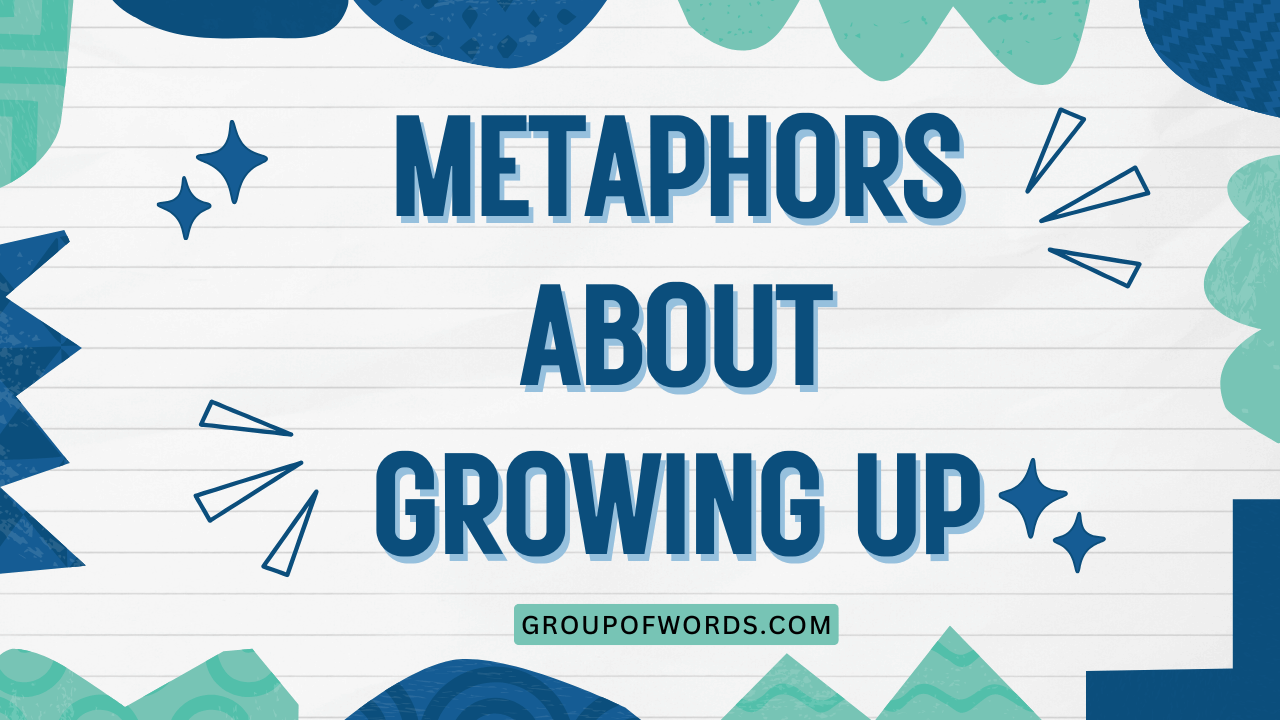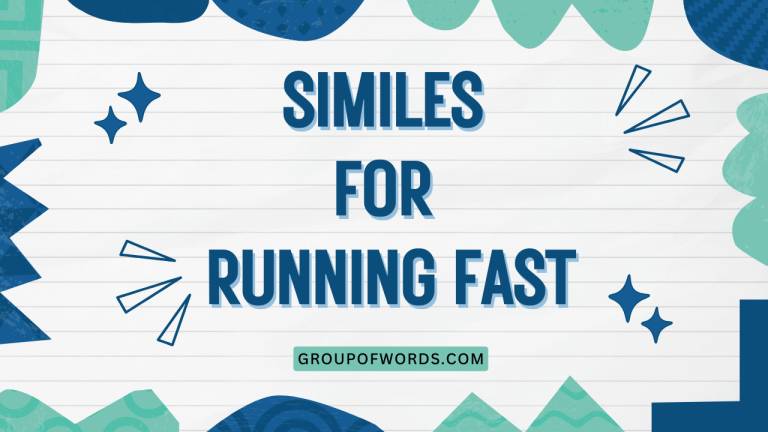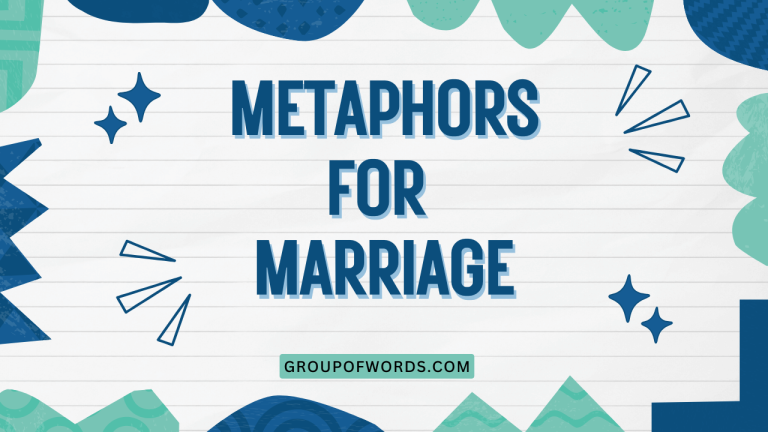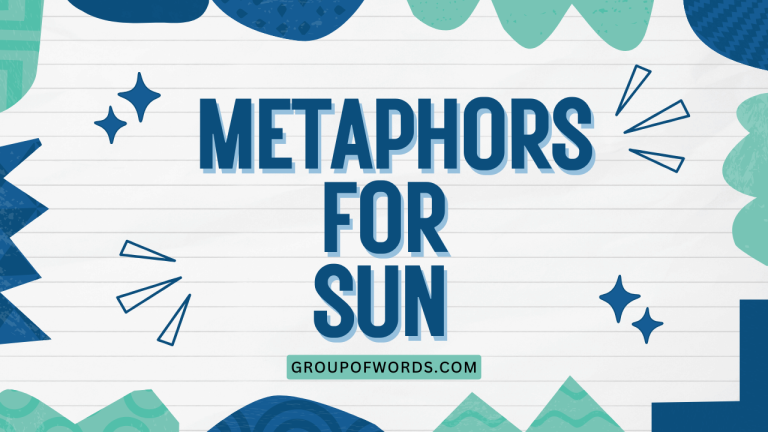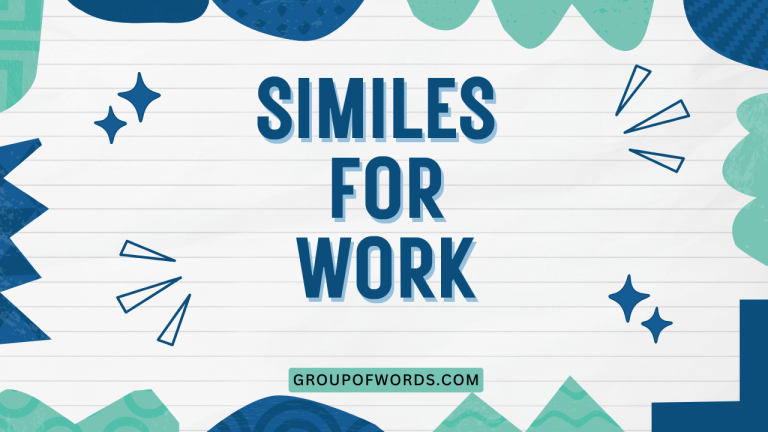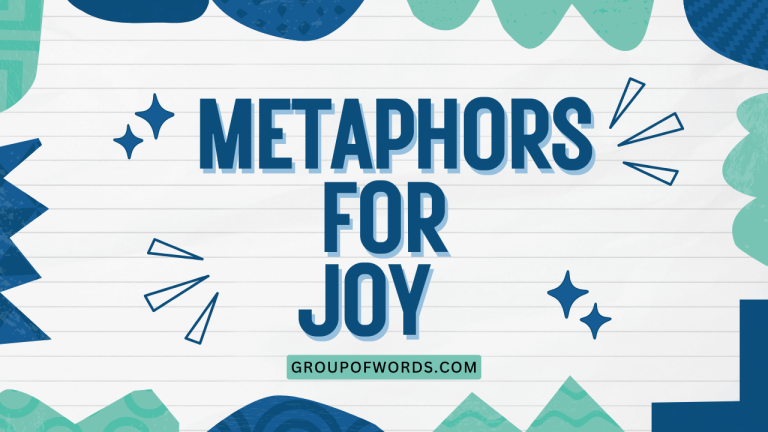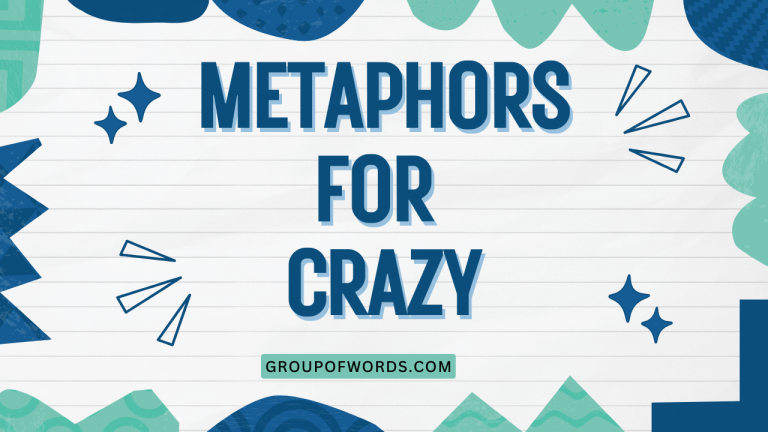Metaphors for Growing Up: Understanding Figurative Language
Growing up is a complex and multifaceted process, often described using metaphors that capture its various stages and challenges. Understanding these metaphors not only enriches our comprehension of literature and everyday language but also provides insight into the human experience.
This article explores the common metaphors used to describe growing up, their structural elements, and how they function in different contexts. This guide will be beneficial for English language learners, students of literature, and anyone interested in exploring the nuances of figurative language.
By understanding these metaphors, you’ll be able to:
- Identify and interpret metaphors related to growth and maturity.
- Use these metaphors effectively in your own writing and speaking.
- Gain a deeper appreciation for the symbolic language used to describe life’s journey.
Table of Contents
- Definition of Metaphors for Growing Up
- Structural Breakdown of Metaphors
- Types and Categories of Growing Up Metaphors
- Examples of Growing Up Metaphors
- Usage Rules for Metaphors
- Common Mistakes with Metaphors
- Practice Exercises
- Advanced Topics in Metaphorical Language
- Frequently Asked Questions
- Conclusion
Definition of Metaphors for Growing Up
A metaphor is a figure of speech that directly compares two unrelated things, asserting that one thing is another. This comparison is not literal but rather symbolic, designed to highlight shared qualities or create a vivid image in the reader’s mind. Metaphors for growing up use this principle to describe the process of maturation and personal development in terms of other, more concrete or relatable concepts. These metaphors help us understand abstract ideas such as maturity, experience, and change by framing them within familiar contexts.
In the context of growing up, metaphors are often used to describe the various stages, challenges, and transformations that individuals experience as they transition from childhood to adulthood. These can encompass emotional, intellectual, and physical development.
For example, “life is a journey” is a common metaphor that suggests that growing up is a process of moving from one point to another, encountering obstacles and milestones along the way. These metaphors offer a powerful way to articulate the complexities of this universal human experience.
Structural Breakdown of Metaphors
Understanding the structure of a metaphor involves recognizing two key elements: the tenor and the vehicle. The tenor is the subject being described (in this case, growing up), while the vehicle is the concept or image used to represent it. The effectiveness of a metaphor lies in the connection between the tenor and the vehicle – the shared qualities or associations that make the comparison meaningful.
For example, in the metaphor “childhood is a garden,” the tenor is childhood, and the vehicle is a garden. The shared qualities might include nurturing, growth, and the potential for beauty.
The metaphor suggests that childhood, like a garden, requires careful tending and cultivation to flourish. Recognizing the tenor and vehicle helps us to deconstruct and interpret the metaphor’s meaning.
A metaphor’s power also comes from what is *implied* and *unsaid*. A good metaphor doesn’t spell everything out; it invites the reader to make connections and draw their own conclusions.
This creates a richer, more engaging experience and allows for multiple interpretations.
Types and Categories of Growing Up Metaphors
Metaphors for growing up can be categorized based on the type of imagery they employ. Different categories emphasize different aspects of the growing-up process, providing a diverse range of perspectives on this complex experience.
Journey Metaphors
Journey metaphors are among the most common and versatile. They frame growing up as a process of moving from one point to another, encountering challenges and milestones along the way.
These metaphors often emphasize the importance of experience, perseverance, and self-discovery.
Examples of journey metaphors include:
- “Life is a highway.”
- “Growing up is a winding road.”
- “Adolescence is a turbulent sea.”
These metaphors suggest that the path of growing up is not always straight or easy, but it is ultimately a process of moving forward and reaching a destination.
Plant Metaphors
Plant metaphors use the imagery of growth, cultivation, and blossoming to describe the process of maturation. These metaphors often emphasize the importance of nurturing, education, and self-care.
Examples of plant metaphors include:
- “Childhood is a seed.”
- “Teenage years are a time of sprouting.”
- “Adulthood is a time of blossoming.”
These metaphors suggest that growing up is a natural process that requires the right conditions to thrive. They also highlight the potential for beauty and fruitfulness that lies within each individual.
Weather Metaphors
Weather metaphors use the imagery of storms, sunshine, and changing seasons to describe the emotional and psychological experiences of growing up. These metaphors often emphasize the unpredictable nature of life and the importance of resilience and adaptability.
Examples of weather metaphors include:
- “Adolescence is a stormy sea.”
- “Childhood is a sunny day.”
- “Adulthood is a long winter.”
These metaphors suggest that growing up is not always easy or pleasant, but it is ultimately a process of weathering the storms and emerging stronger on the other side.
Building Metaphors
Building metaphors use construction as a symbol of the developing self. Each stage of life is like building a house, laying foundations, and adding structure.
Examples of building metaphors include:
- “Laying the foundation for your future.”
- “Building character.”
- “A crumbling sense of self.”
These metaphors emphasize the active role individuals play in shaping their own lives and identities. They suggest that growing up is a process of constructing a solid and lasting foundation for the future.
Animal Metaphors
Animal metaphors often link the stages of development to the life cycles or characteristics of animals, highlighting instincts, growth, and the search for identity.
Examples of animal metaphors include:
- “Breaking out of your shell.”
- “Spreading your wings.”
- “A caterpillar transforming into a butterfly.”
These metaphors can illustrate themes of freedom, transformation, and the discovery of one’s true potential.
Examples of Growing Up Metaphors
The following tables provide examples of metaphors for growing up categorized by type. Each example is accompanied by a brief explanation of its meaning.
Table 1: Journey Metaphors
This table provides examples of journey metaphors, illustrating how life’s journey is often compared to a road, a voyage, or a climb.
| Metaphor | Explanation |
|---|---|
| Life is a highway. | Life is a continuous journey with many possible routes and destinations. |
| Growing up is a winding road. | The path of maturation is not always straight or easy. |
| Adolescence is a turbulent sea. | Teenage years are often characterized by emotional turmoil and uncertainty. |
| He’s navigating the challenges of adulthood. | Adult life requires skill and strategy to overcome obstacles. |
| She’s reached a crossroads in her life. | She is at a point where she must make a significant decision. |
| The journey of self-discovery. | Growing up involves learning about oneself and finding one’s identity. |
| Every step of the way. | Emphasizes the gradual and continuous nature of growth. |
| The climb to success. | Achieving goals requires effort and perseverance. |
| Life’s a marathon, not a sprint. | Success in life requires endurance and long-term planning. |
| Lost in the woods of adolescence. | Feeling confused and uncertain during teenage years. |
| He’s charting his own course. | Taking control of one’s own life and destiny. |
| She’s sailing through life. | Experiencing a smooth and easy journey. |
| He’s hitting roadblocks. | Encountering obstacles and challenges. |
| She’s paving her own way. | Creating her own opportunities and path. |
| He’s on the right track. | Making progress towards his goals. |
| She’s at a turning point. | Facing a significant change or decision. |
| He’s going in circles. | Feeling stuck and not making progress. |
| She’s climbing the ladder of success. | Advancing in her career or achieving her goals. |
| He’s reaching new heights. | Achieving greater success and accomplishments. |
| She’s embarking on a new adventure. | Starting a new chapter in her life. |
| Life is a long and winding road. | Life is a journey filled with twists, turns, and unexpected events. |
| He’s on a quest for meaning. | Searching for purpose and significance in life. |
| She’s navigating the ups and downs of life. | Dealing with both positive and negative experiences. |
| He’s forging his own path. | Creating his own unique journey. |
Table 2: Plant Metaphors
This table provides examples of plant metaphors, illustrating how growing up is often compared to the growth of a plant, with its various stages of development.
| Metaphor | Explanation |
|---|---|
| Childhood is a seed. | Childhood is a time of potential and promise. |
| Teenage years are a time of sprouting. | Adolescence is a time of rapid growth and development. |
| Adulthood is a time of blossoming. | Adulthood is a time of maturity and fulfillment. |
| Nurturing young minds. | Providing the care and support needed for children to grow and learn. |
| Planting the seeds of knowledge. | Instilling ideas and information in young people. |
| Growing roots. | Establishing connections and a sense of belonging. |
| A budding artist. | A young person with potential in the arts. |
| A blossoming career. | A career that is flourishing and thriving. |
| Reaping the rewards of hard work. | Enjoying the benefits of one’s efforts. |
| A fruitful life. | A life that is productive and fulfilling. |
| Withering under pressure. | Failing to thrive due to stress and adversity. |
| A thorny issue. | A problem that is difficult to resolve. |
| The seeds of doubt. | Feelings of uncertainty and mistrust. |
| Pruning back bad habits. | Eliminating negative behaviors and tendencies. |
| A fertile imagination. | A mind that is creative and productive. |
| Rooted in tradition. | Deeply connected to cultural heritage and customs. |
| Branching out. | Exploring new opportunities and experiences. |
| A growing concern. | An issue that is becoming increasingly worrisome. |
| The fruits of their labor. | The results of their hard work and effort. |
| A garden of possibilities. | A wide range of opportunities and potential outcomes. |
| They are the future crop. | Future generations. |
| He is the root of our family. | The origin of the family. |
| Let your ideas blossom. | Let your ideas flourish. |
| She is a late bloomer. | She is a person who develops later than others. |
| He is deeply rooted in reality. | He is very connected to reality. |
Table 3: Weather Metaphors
This table presents weather metaphors, illustrating how emotional states and life experiences can be likened to different weather conditions.
| Metaphor | Explanation |
|---|---|
| Adolescence is a stormy sea. | Teenage years are often characterized by emotional turmoil and uncertainty. |
| Childhood is a sunny day. | Childhood is a time of happiness and innocence. |
| Adulthood is a long winter. | Adulthood can be a time of hardship and challenges. |
| Weathering the storm. | Enduring difficult times and emerging stronger. |
| A ray of sunshine. | Someone or something that brings joy and happiness. |
| Under a cloud. | Feeling sad or depressed. |
| A whirlwind romance. | A passionate and intense relationship. |
| Clear skies ahead. | A future that is free of problems and difficulties. |
| Chasing rainbows. | Pursuing unrealistic or unattainable goals. |
| Caught in the storm. | Experiencing a difficult or chaotic situation. |
| A frosty reception. | An unfriendly or unwelcoming greeting. |
| The calm before the storm. | A period of peace and quiet before a time of trouble. |
| A heatwave of excitement. | A sudden surge of enthusiasm or anticipation. |
| Raining on their parade. | Spoiling someone’s enjoyment or celebration. |
| A blizzard of paperwork. | An overwhelming amount of documents or tasks. |
| A drought of creativity. | A period of lacking inspiration or new ideas. |
| The winds of change. | Forces that are causing significant shifts or transformations. |
| A thunderous applause. | Loud and enthusiastic approval. |
| A drizzle of doubt. | A small amount of uncertainty or hesitation. |
| She is my sunshine. | She is happiness. |
| He is the storm. | He is destruction. |
| She is a breeze. | She is ease. |
| He is the eye of the storm. | He is the center of attention. |
| She is a hurricane. | She is chaos. |
| The sky is the limit. | There is no limit to what you can achieve. |
Table 4: Building Metaphors
This table provides examples of building metaphors, illustrating personal development and life progress through the imagery of construction.
| Metaphor | Explanation |
|---|---|
| Laying the foundation for your future. | Preparing for future success by acquiring knowledge and skills. |
| Building character. | Developing strong moral qualities and principles. |
| A crumbling sense of self. | Experiencing a loss of confidence and identity. |
| Constructing a new life. | Creating a fresh start or beginning a new chapter. |
| Demolishing old habits. | Breaking free from negative behaviors and patterns. |
| A solid relationship. | A strong and stable connection with someone. |
| Building bridges. | Establishing connections and understanding between people. |
| The architecture of success. | The plan and structure that leads to achievement. |
| Renovating their marriage. | Working to improve and revitalize a relationship. |
| A house of cards. | Something that is unstable and easily collapses. |
| Building a career from the ground up. | Starting at the bottom and working one’s way up. |
| A towering achievement. | An impressive and significant accomplishment. |
| The framework of their beliefs. | The underlying principles and values that guide their thinking. |
| Constructing a narrative. | Creating a story or explanation. |
| A well-structured argument. | A clear and logical presentation of ideas. |
| Building a legacy. | Creating something that will last and be remembered. |
| A monument to their success. | A lasting symbol of their accomplishments. |
| Laying the groundwork. | Preparing the necessary conditions for something to happen. |
| Fortifying their defenses. | Strengthening their protection against threats or challenges. |
| A solid foundation of knowledge. | A strong understanding of fundamental concepts. |
| Building castles in the sky. | Having unrealistic dreams or plans. |
| She is building her empire. | She is building her wealth. |
| He is the building block of our team. | He is the base of our team. |
| She is a brick. | She is strong. |
| He is the architect of our plan. | He is the creator of our plan. |
Table 5: Animal Metaphors
This table showcases animal metaphors, illustrating how human experiences and stages of life are often compared to the behaviors and transformations of animals.
| Metaphor | Explanation |
|---|---|
| Breaking out of your shell. | Becoming more confident and outgoing. |
| Spreading your wings. | Becoming independent and exploring new opportunities. |
| A caterpillar transforming into a butterfly. | Undergoing a significant and positive change. |
| The lion’s share. | The largest portion or advantage. |
| A wolf in sheep’s clothing. | Someone who appears harmless but is actually dangerous. |
| A fish out of water. | Someone who feels uncomfortable or out of place. |
| Like a moth to a flame. | Being irresistibly drawn to something dangerous or tempting. |
| A busy bee. | Someone who is hardworking and productive. |
| A lone wolf. | Someone who prefers to be alone and independent. |
| A sitting duck. | Someone who is vulnerable and easily attacked. |
| Eager beaver. | Someone who is enthusiastic and hardworking. |
| The black sheep of the family. | Someone who is different from the rest of the family and often disapproved of. |
| A night owl. | Someone who is active and productive at night. |
| A social butterfly. | Someone who is outgoing and enjoys socializing. |
| A copycat. | Someone who imitates others. |
| A wild goose chase. | A pointless and fruitless pursuit. |
| A snake in the grass. | Someone who is deceitful and untrustworthy. |
| A cash cow. | A reliable source of income or profit. |
| A sacred cow. | Something that is considered untouchable and immune to criticism. |
| A dog’s life. | A miserable and difficult existence. |
| He is as sly as a fox. | He is very clever. |
| She is as free as a bird. | She is very free. |
| He is a pig. | He is messy. |
| She is a chicken. | She is scared. |
| He is a rat. | He is a snitch. |
Usage Rules for Metaphors
Using metaphors effectively involves understanding certain rules and guidelines. While metaphors are inherently creative and flexible, there are principles that can help ensure clarity and impact.
- Clarity: The connection between the tenor and the vehicle should be clear and understandable. Avoid using metaphors that are too obscure or confusing.
- Relevance: The metaphor should be relevant to the context and the subject matter. It should enhance understanding and add depth to the writing.
- Originality: While common metaphors can be effective, try to create original metaphors that are fresh and imaginative. This can make your writing more engaging and memorable.
- Consistency: Avoid mixing metaphors within the same sentence or paragraph. This can create confusion and weaken the impact of the writing.
- Appropriateness: Consider the audience and the purpose of the writing when choosing metaphors. A metaphor that is appropriate in one context may not be appropriate in another.
Common Mistakes with Metaphors
One common mistake is using clichéd metaphors. These are overused expressions that have lost their impact and can make writing seem uninspired. For example, “life is a rollercoaster” is a common cliché. While it conveys the idea of ups and downs, it lacks originality and freshness.
Another mistake is mixed metaphors, where two or more inconsistent metaphors are combined, creating a confusing and illogical image. For example, “He nipped that idea in the bud and ran with it” combines two conflicting images: stopping something before it starts and pursuing it enthusiastically.
Here are some examples of common mistakes with metaphors:
| Incorrect | Correct | Explanation |
|---|---|---|
| Life is a rollercoaster; it’s a long and winding road. | Life is a long and winding road. | Avoid mixing metaphors. Choose one consistent image. |
| He nipped that idea in the bud and ran with it. | He ran with that idea. | Avoid conflicting images. |
| She’s climbing the corporate ladder, but she’s also burning the candle at both ends. | She’s climbing the corporate ladder. | Choose metaphors that align logically. |
| The project is a train wreck, but we need to stay the course. | The project is a train wreck. | Don’t mix positive and negative images. |
| He’s a diamond in the rough, but also a needle in a haystack. | He’s a diamond in the rough. | Avoid using contradictory metaphors. |
Practice Exercises
Test your understanding of metaphors for growing up with these exercises.
Exercise 1: Identifying Metaphors
Identify the metaphor in each sentence and explain its meaning. Also identify the tenor and vehicle.
| Question | Answer |
|---|---|
| 1. Adolescence is a turbulent river. | Metaphor: Adolescence is a turbulent river. Meaning: Adolescence is a period of emotional and psychological upheaval. Tenor: Adolescence. Vehicle: Turbulent river. |
| 2. Growing up is a marathon, not a sprint. | Metaphor: Growing up is a marathon, not a sprint. Meaning: Growing up requires endurance and long-term planning. Tenor: Growing up. Vehicle: Marathon. |
| 3. Childhood is a garden where dreams are planted. | Metaphor: Childhood is a garden. Meaning: Childhood is a time of nurturing and potential. Tenor: Childhood. Vehicle: Garden. |
| 4. Life is a book, and each year is a new chapter. | Metaphor: Life is a book. Meaning: Life is a series of experiences and events. Tenor: Life. Vehicle: Book. |
| 5. He’s building a bridge to his future. | Metaphor: Building a bridge. Meaning: Making connections and preparing for what’s to come. Tenor: Future. Vehicle: Bridge. |
| 6. She is spreading her wings and flying away from home. | Metaphor: Spreading her wings. Meaning: Becoming independent and exploring new opportunities. Tenor: Leaving home. Vehicle: Spreading wings. |
| 7. He is the foundation of our family. | Metaphor: He is the foundation. Meaning: He is the base of our family. Tenor: He. Vehicle: Foundation. |
| 8. She is a hurricane going through life. | Metaphor: She is a hurricane. Meaning: She is going through life causing chaos. Tenor: She. Vehicle: Hurricane. |
| 9. Life is not a bed of roses. | Metaphor: Life is not a bed of roses. Meaning: Life is not perfect. Tenor: Life. Vehicle: Bed of Roses. |
| 10. She is a diamond in the rough. | Metaphor: She is a diamond. Meaning: She has potential. Tenor: She. Vehicle: Diamond. |
Exercise 2: Completing Metaphors
Complete the following sentences by adding an appropriate metaphor for growing up.
| Question | Answer |
|---|---|
| 1. The teenage years can be like __________. | The teenage years can be like a rollercoaster. |
| 2. Growing up is often described as __________. | Growing up is often described as a journey of self-discovery. |
| 3. Adulthood is a time when __________. | Adulthood is a time when you reap what you sow. |
| 4. Childhood is a time of __________. | Childhood is a time of innocence and wonder. |
| 5. Education is like __________. | Education is like planting seeds for the future. |
| 6. A good friend is like __________. | A good friend is like a ray of sunshine on a cloudy day. |
| 7. Learning new things is like __________. | Learning new things is like adding bricks to a building. |
| 8. Facing challenges is like __________. | Facing challenges is like weathering a storm. |
| 9. Dreams are like __________. | Dreams are like stars guiding us through the night. |
| 10. Love is like __________. | Love is like a warm fire on a cold winter day. |
Advanced Topics in Metaphorical Language
For advanced learners, exploring the theoretical underpinnings of metaphor can provide a deeper understanding of its function and impact. Conceptual Metaphor Theory, developed by George Lakoff and Mark Johnson, proposes that metaphors are not just linguistic devices but fundamental cognitive structures that shape our understanding of the world.
This theory suggests that abstract concepts are understood in terms of more concrete experiences, through systematic metaphorical mappings.
For example, the metaphor “ARGUMENT IS WAR” is a conceptual metaphor that underlies many of our expressions about arguments, such as “He attacked my position,” “I defended my point,” and “He won the argument.” Understanding these conceptual metaphors can provide insight into how we think and reason about abstract concepts like argument, time, and emotions.
Frequently Asked Questions
Here are some frequently asked questions about metaphors for growing up.
- What is the difference between a metaphor and a simile?
A metaphor directly equates two things, while a simile uses “like” or “as” to make a comparison. For example, “Life is a journey” is a metaphor, while “Life is like a journey” is a simile. Similes are often considered less forceful than metaphors.
- Why are metaphors important in language?
Metaphors add depth, vividness, and emotional resonance to language. They help us understand abstract concepts by relating them to more concrete experiences. Metaphors can also make writing more engaging and memorable.
- How can I improve my ability to understand and use metaphors?
Read widely and pay attention to the metaphors used by skilled writers. Practice creating your own metaphors by identifying the shared qualities between two unrelated things. Be creative and don’t be afraid to experiment.
- What are some common pitfalls to avoid when using metaphors?
Avoid clichés, mixed metaphors, and metaphors that are too obscure or confusing. Make sure your metaphors are relevant to the context and appropriate for the audience.
- Can a metaphor be too subtle?
Yes, a metaphor can be too subtle if the connection between the tenor and the vehicle is not clear enough. The reader should be able to understand the intended meaning without too much effort.
- Are metaphors universal, or do they vary across cultures?
While some metaphors are universal, many metaphors are culturally specific. The experiences and associations that inform metaphors can vary widely across different cultures.
- How can I come up with better metaphors?
Start by thinking about the subject you want to describe. Brainstorm a list of related ideas, images, and experiences. Then, look for connections between these ideas and your subject. Don’t be afraid to be creative and experiment with different possibilities.
- What if my metaphor doesn’t make sense to someone else?
Ask them what they find confusing about it. It could be that the connection you’re trying to make isn’t clear, or that they have a different understanding of one of the elements in your metaphor. Use their feedback to refine your metaphor and make it more understandable.
Conclusion
Metaphors for growing up offer a powerful and evocative way to understand the complexities of maturation and personal development. By framing this universal human experience in terms of other, more concrete concepts, metaphors provide insight into the challenges, transformations, and milestones that individuals encounter as they transition from childhood to adulthood.
Understanding the structure, types, and usage rules of these metaphors can enhance our comprehension of literature, enrich our communication, and deepen our appreciation for the symbolic language used to describe life’s journey.
As
we continue to explore and refine our use of metaphorical language, we gain not only a greater facility with expression but also a more profound understanding of ourselves and the world around us. The metaphors we choose reflect our values, our perceptions, and our aspirations, shaping the way we interpret and navigate the ever-evolving landscape of life.
